Life
-
 Adapting to Climate Change October 13, 2000
Adapting to Climate Change October 13, 2000Teams of scientists and resource planners assess their region’s most critical vulnerabilities in the United States National Assessment on the Potential Consequences of Climate Variability and Change. The report covers agricultural productivity, coastal areas, water resources, forests, and human health.
-
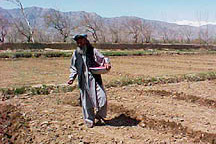 Aiding Afghanistan February 7, 2006
Aiding Afghanistan February 7, 2006NASA satellite data help optimize agricultural output in Afghanistan.
-
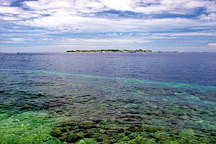 Amazing Atolls of the Maldives May 1, 2001
Amazing Atolls of the Maldives May 1, 2001Though scientists have been studying atolls at least since the mid-1800s, many mysteries remain about exactly how they form and what factors determine their shape. Using satellite imagery collected by Landsat 7, scientists are attempting to discern if monsoons played a role in shaping the Maldives.
-
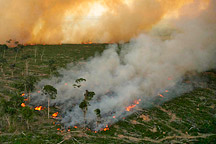 Amazon Fires on the Rise March 7, 2008
Amazon Fires on the Rise March 7, 2008In 2006, fires and smoke in the Amazon declined significantly for the first time in nearly a decade. Is Amazon burning under control?
-
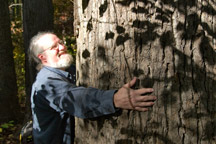 Ancient Forest to Modern City February 1, 2008
Ancient Forest to Modern City February 1, 2008To understand how local weather shifted when the towering forests of the eastern United States gave way to fields and cities, scientists must reconstruct the region's historical landscapes.
-
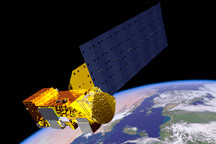 Aqua June 24, 2002
Aqua June 24, 2002Aqua carries six state-of-the-art instruments to observe the Earth's oceans, atmosphere, land, ice and snow covers, and vegetation, providing high measurement accuracy, spatial detail, and temporal frequency. This comprehensive approach enables scientists to study interactions among the many elements of the Earth system.
-
 Ask-A-Scientist July 25, 2006
Ask-A-Scientist July 25, 2006Questions from visitors to the Earth Observatory and answers from scientists.
-
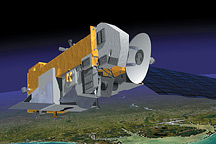 Aura: A Mission Dedicated to the Health of Earth's Atmosphere December 7, 2004
Aura: A Mission Dedicated to the Health of Earth's Atmosphere December 7, 2004On July 15, 2004 at 3:02 a.m., NASA launched the Aura satellite, the third flagship in a series of Earth-observing satellites designed to view Earth as a whole system, observe the net results of complex interactions within the climate system, and understand how the planet is changing in response to natural and human influences.
-
 Beating the Heat in the World's Big Cities August 2, 2006
Beating the Heat in the World's Big Cities August 2, 2006Green roofs can mitigate urban heat islands and heat waves.
-
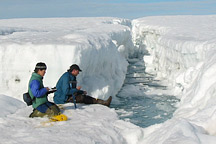 Breakup of the Ward Hunt Ice Shelf (DAAC Study) January 20, 2004
Breakup of the Ward Hunt Ice Shelf (DAAC Study) January 20, 2004In the summer of 2002, graduate student Derek Mueller made an unwelcome discovery: the biggest ice shelf in the Arctic was breaking apart
-
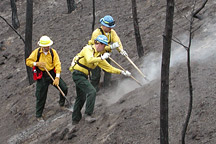 Burned Area Emergency Rehabilitation October 23, 2002
Burned Area Emergency Rehabilitation October 23, 2002The aftermath of a wildfire can be as dangerous as the blaze itself. The charred landscape is prone to flooding and erosion, and natural resource experts usually have only one week to assess the damage and propose steps to mitigate disaster. Satellite mapping of burned areas can save crews time and money by helping guide field crews to the most crucial areas. USDA Forest…
-
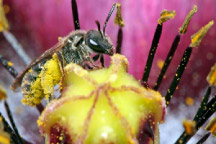 Buzzing about Climate Change September 7, 2007
Buzzing about Climate Change September 7, 2007A Maryland beekeeper's annual records of honey production reveal that flowering trees are blooming nearly a month earlier than they did a few decades ago. Listen to the podcast by EarthSky.
-
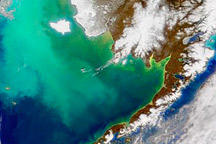 Changing Currents in the Bering Sea March 30, 1999
Changing Currents in the Bering Sea March 30, 1999During the summers of 1997 and 1998, a type of one-celled microscopic plant changed the color of the Bering Sea from its natural deep blue to a shimmering aquamarine. These plants, called coccolithophores, present a unique problem for researchers because a massive bloom of the organisms has never before been observed in the Bering Sea.
-
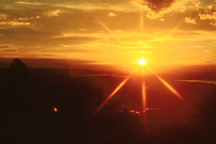 Chemistry in the Sunlight January 28, 2003
Chemistry in the Sunlight January 28, 2003Ozone has proven to be among the most difficult air pollutants to control. To control ozone requires understanding its complex chemistry and how the chemical travels from one locality to another. Chemistry in the Sunlight explains basic aspects of ozone formation and provides a sample set of chemical reactions involved in ozone production.